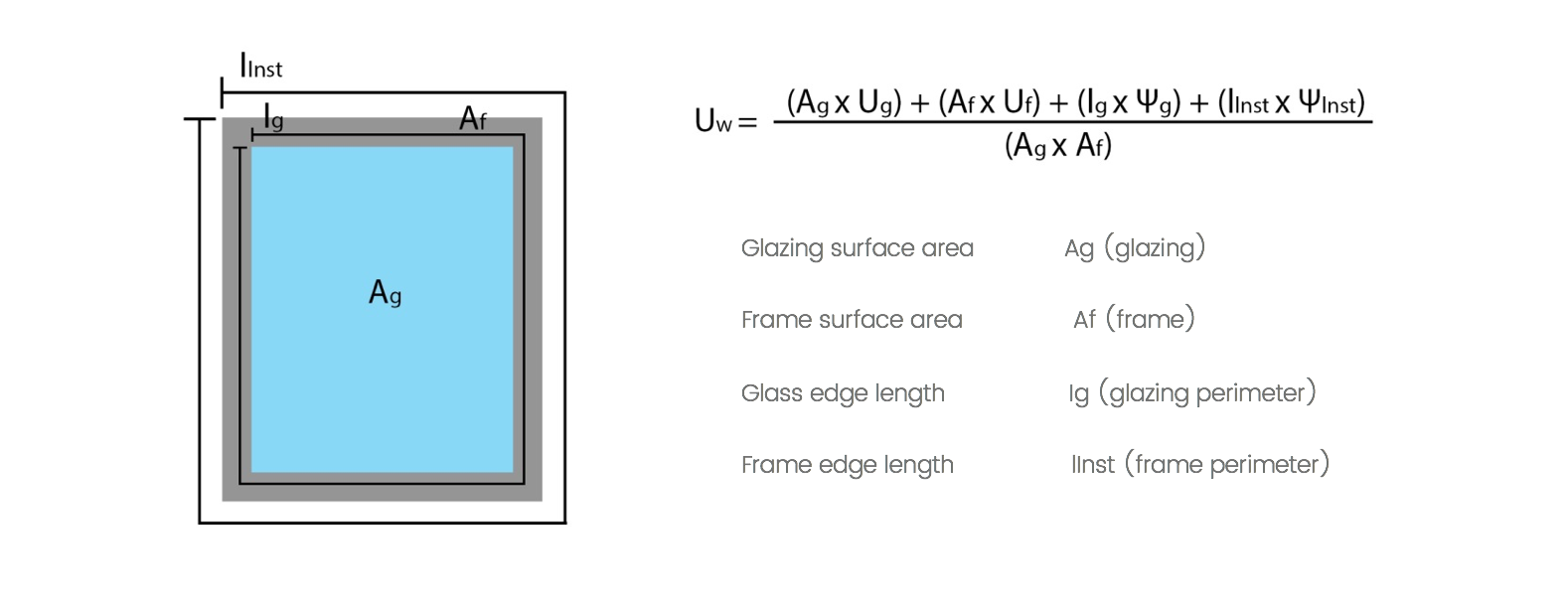Your Guide to Glass in Windows and Doors
Grecoline provides a vast range of glazing options for your complete aluminium window and door systems.
Glazing plays a significant role in the overall energy efficiency of a building. The right type of glazing allows for heat gain in winter and heat reduction in summer as well as the right lighting levels.

Up to -60% of a home’s heating energy can be lost during winter and up to +91% can be gained during summer through the windows. When the thermal performance of windows is improved, the energy costs and greenhouse gas emissions are reduced significantly.
Glazing can also affect the aesthetic appearance, the acoustic performance, comfort, safety as well as security of the building.

What is Solar Heat Gain and SHGC?
Regardless of the temperature outside, heat gain through the window is caused by direct and indirect solar radiation. The amount of heat that passes through the window from direct solar radiation is measured by the Solar Heat Gain Coefficient (SHGC). The SHGC is the portion of incident perpendicular solar radiation allowed through a window, directly transmitted as well as absorbed and afterwards released inward. SHGC is expressed as a number between 0 and 1 where the lower a window’s SHGC is, the greater the solar control.

What is Thermal Conductivity and U-value?
Thermal conductivity is the ability of a material to transfer heat. The U- value is the means of quantifying the amount of the overall heat flow. For a window, the U-value demonstrates the heat flow per hour (in watts W) that is transmitted through each square metre (m2) of window with a temperature difference of 1° Kelvin (K) between the indoor and outdoor air temperature. The derived unit for thermal conductivity is W/m2K.
The R-value is the resistance to heat transfer which denotes an insulating factor. It is the reciprocal of the total U-factor (R=1/U). This means that the higher the R-value of a material, the higher the insulating value; the smaller the U-factor, the lower the rate of heat flow. The better a window’s or door’s insulating performance is, the greater comfort one will enjoy inside the building despite the external climatic conditions.
Measuring the U-value of windows
The thermal conductivity of the glazing part of the window is influenced by the total amount of glazing sheets (double, triple etc.) used, the size of the glazing, type of coatings used on the glazing (i.e. low-e), as well as the cavity/air space width or type of gas that fills the cavity.

There are 3 types of u-values that can be calculated as seen in the image above:
• The Ug: u-value measured through the centre of a glazing unit alone – ‘centre-pane’
• The Uf: u-value of the window frame alone.
• The Uw: overall u-value of the window which includes the glazing unit and frame. – ‘overall’
To calculate the he thermal conductivity of a window, the total window assembly needs to be taken into consideration. This means that the overall Uw-value of the window is calculated including the Ug and Uf as well as the linear heat transfer coefficient Ψg (g = glazing), the area/size of the window and the glass edge length lg. Another factor taken into account is the thermal bridge due to the installation of the window in the exterior wall Ψlnst and the length llnst where the window meets the wall.
The formula used for the thermal conductivity is:

Type of Glass Options
Grecoline offers a wide variety of glazing options that satisfy the requirements of the client and architects and meet all the specifications. Some of the options are:
- Float
- Laminate
- Toughened
- Clear/Tinted/colour
- Obscured/frosted
- Double/triple glazed (single glazing option available upon request)
- Low emissivity glass (Low-e)
The standard double glazing provided (unless otherwise requested) is:
6.38mm / 8, 10 or 12mm airgap (depending on profile) / 6.38mm laminated glass.
When a thermal break profile is used, the airgap space is larger.
Benefits of Double Glazed Windows/Doors
Double glazing is an ideal choice that promotes energy efficiency as it is considered a passive energy saving system and also helps minimise your carbon footprint. It adds to the thermal comfort of the occupant while eliminating the need for any heaters or air conditioners which subsequently reduce your energy costs.
The two panes of glass are separated by a sealed air gap which acts as an additional layer of insulation. This prevents the heat in winter from escaping the interior keeping your home at a comfortable temperature. Likewise in summer, the double glazing prevents unwanted heat entering the home.
In addition, double glazing reduces noise pollution as external sounds between medium to high frequencies such as the human voice or traffic noises are curbed.
Double glazing forms an extra barrier making it difficult and more time consuming to break through rendering it an excellent choice for added security for your home or work.
Comparing Single vs Double Glazed Windows

*Remember: The higher the U-value, the greater the amount of heat that can pass through the glass, reducing its energy performance while a low U-value means that the glass acts as a better insulator.

The Smart Move
By changing from single glazing to double glazing your energy savings will be affected as your home will be warmer in winter and cooler during summer. The double glazing has the advantage of preventing thermal loss from the interior and solar heat gain from the exterior. A single glazed window not only allows heat to enter during summer making the home uncomfortably warm, but it can transmit over 50% of the heat from the interior of your home during winter impacting significantly your electricity bills. And while people may think that double glazing is a pricey option initially compared to single glazing, one will soon realize that double glazing means less money spent on energy for mechanical heating and cooling making it so worthwhile in the long term.
